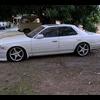T3 for rb20det???
Announcements
-
Similar Content
-
Latest Posts
-
https://yariksteel.ru/manual/R33/Skyline_R33_elektroprovodka.pdf Page 18 should be what you want for the Dash Cluster wiring. Though, you don't need the dash plugged in to get the motor running. What you want is power as how GTSBoy said. You need to power the ECU. Find in the above link the ECU pin outs (Verify them before just connecting them up from things written on the internet). Find anything needing power, give it power, find anything needing ground, give it ground. Then give the starter motor power through a big cable, and bridge the solenoid on the starter straight to power too. ECU will be on, and when you give the starter power, it'll spin the starter motor, and it should start. I also hope you have a proper stand, and not just the engine sitting on some wood. You will want it bolted down properly.
-






Recommended Posts
Create an account or sign in to comment
You need to be a member in order to leave a comment
Create an account
Sign up for a new account in our community. It's easy!
Register a new accountSign in
Already have an account? Sign in here.
Sign In Now